
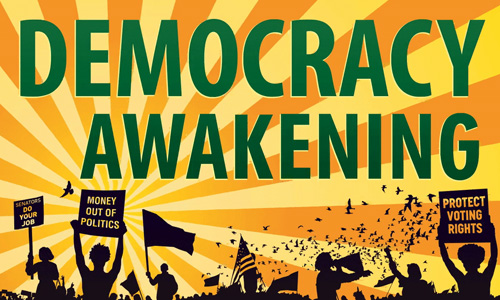
As editor of Greenpeace USA’s blog for almost a year now, I’ve had the privilege of supporting some amazing actions from behind the scenes. I wrote in amazement as 13 climbers put themselves—literally—between Shell and the Arctic last summer, and I was equally inspired watching thousands mobilize in Paris during international climate talks a few months later, to name just a few.

As rewarding as it is to tell the story of these actions from my computer, this weekend I’m taking on a new role: activist. I’ll be joining thousands of people at Democracy Awakening, rallying on Capitol Hill to build a democracy that puts people before corporate interests.
I’m joining because I think our voices should speak louder than their money (yep, that’s me in the photo above), and I’m not the only one. If any of the reasons below strike a chord with you, be sure to add your voice to the call for a Democracy Awakening.
1. Because we urgently need to restore voting rights.

Voting rights are more threatened right now than at any time since the Voting Rights Act was passed 50 years ago. This year, 17 states will have new voting restrictions in place targeting people of color, low-income groups, students, and the elderly.
Already, we’ve seen barriers to primary voting in Alabama, Arizona, Nevada, North Carolina, and Wisconsin make headlines. Arizona’s primary was such a disaster that the Department of Justice is investigating potential voter discrimination.
2. Because it’s time get big money out of politics.
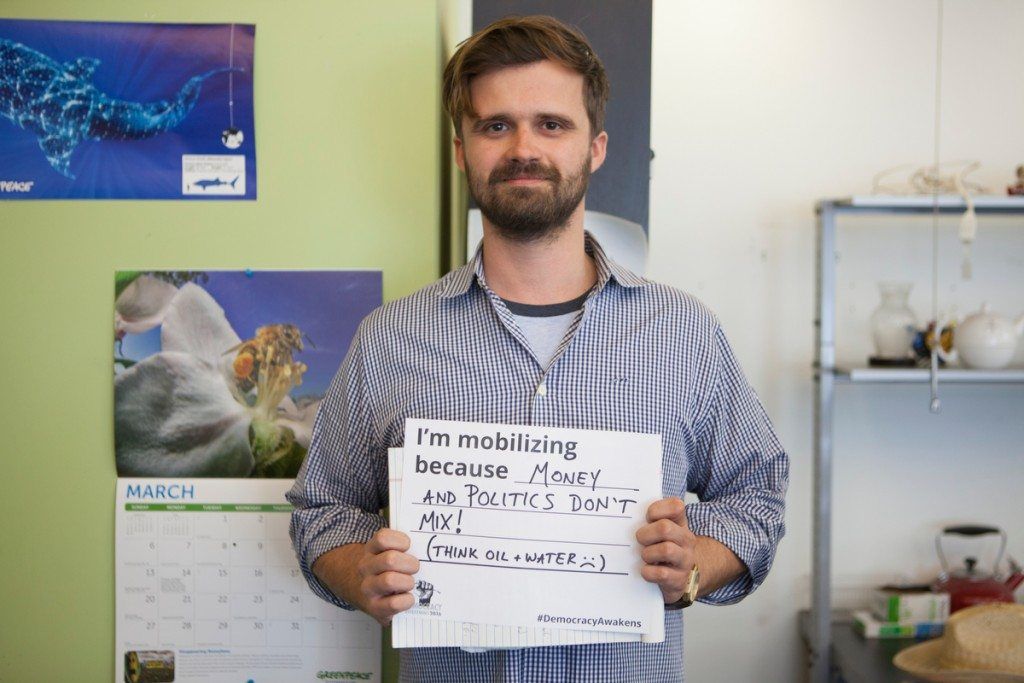
It’s not surprising that the same elected officials denying the science of climate change are the ones taking the most money from companies like Shell, Exxon, and BP. When our lawmakers are bought and sold by industry lobbyists, it means they’re not listening to people like you and me.
That means that getting corporate money out of politics isn’t just a solution for fixing democracy. It’s the first step towards real progress on tackling climate change and so many of the issues we care about.
3. Because when we unite our movements, we are stronger.
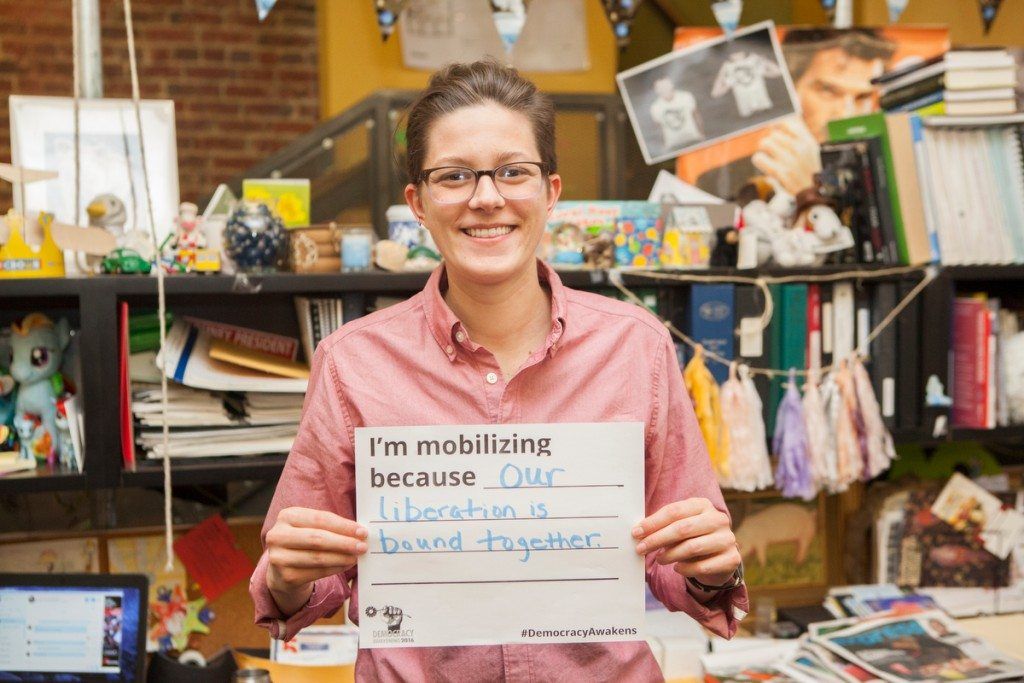
Working alone, none of us have the power to turn around a democracy stalled by corporate interests.
That’s why more than 260 groups have come together to form Democracy Awakening. These include civil rights groups like NAACP, labor unions like the Communications Workers of America, and of course environmental groups like Greenpeace. Each of these 260 groups knows that our only chance of winning on any of our causes is to come together to fix democracy first.
4. Because democracy has everything to do with being an environmentalist.

Our democracy should represent the interests of the people—and that definitely includes a safe climate and healthy environment.
Getting money out of politics means giving people like you and me more influence than companies like Shell and Exxon. Restoring voting rights means empowering those most affected by environmental injustice.
5. Because we have a right to peaceful protest.
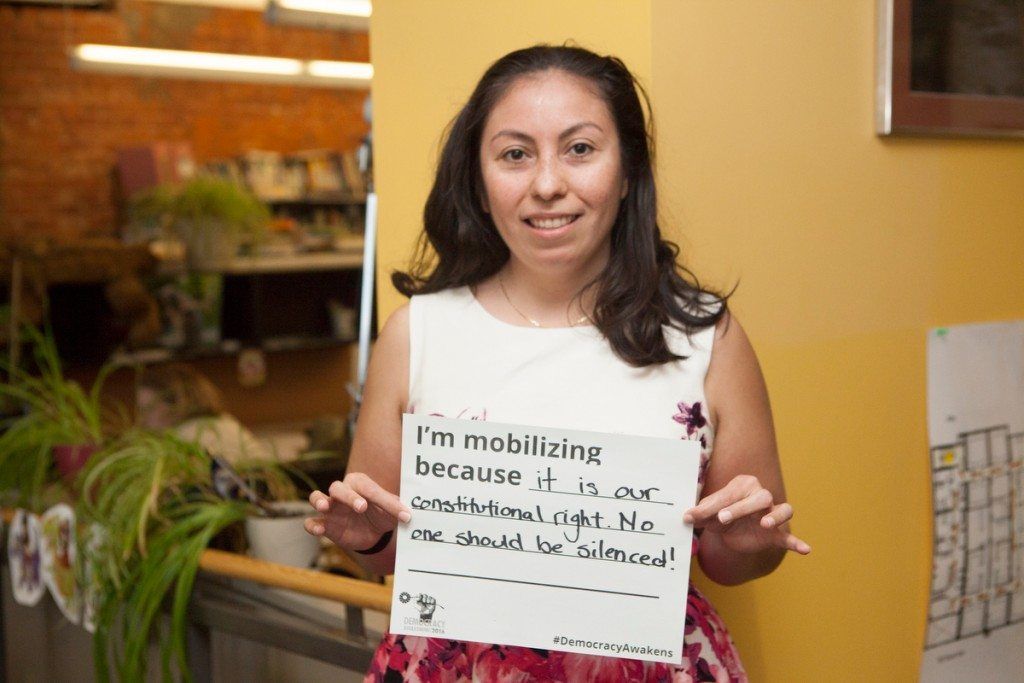
The U.S. was founded on the idea of equal representation for all, but from the very beginning we’ve had to fight for the right to be heard.
By standing up for our democracy this weekend, we’re inspired by the legacy of abolitionists, suffragettes, civil rights activists and more who broke down barriers to political participation.
6. Because people power is our best chance to be heard.

In an ideal democracy, we wouldn’t have to mobilize en masse for our elected leaders to hear our demands to act on climate, civil rights and other critical issues. But right now, people power is our best chance to get Washington’s attention and force elected officials to listen to us, not lobbyists.
The more visible, united, and vocal we can be, the better chance we have of building a democracy that truly represents all Americans.
7. Because we’re don’t have to wait anymore—the time to act is now.
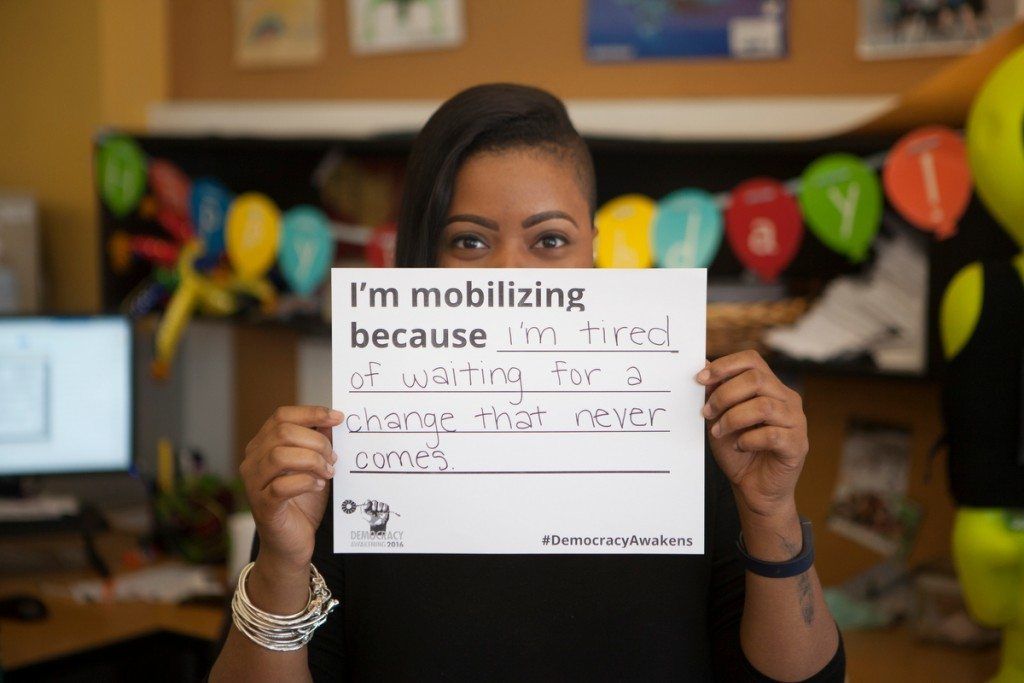
The challenges we face are too urgent to continue working within the system, casting our votes each year and hoping the leaders we elect will get it right. It’s time for the people to take matters into our hands and give our elected officials the wake up call they’ve been missing.
Ready to add your story to the list? Join the Democracy Awakening movement today!
YOU MIGHT ALSO LIKE
40 Students Arrested Demanding Their Schools Divest From Fossil Fuels
March 2016 Was Hottest on Record by Greatest Margin Yet Seen for Any Month

 233k
233k  41k
41k  Subscribe
Subscribe 